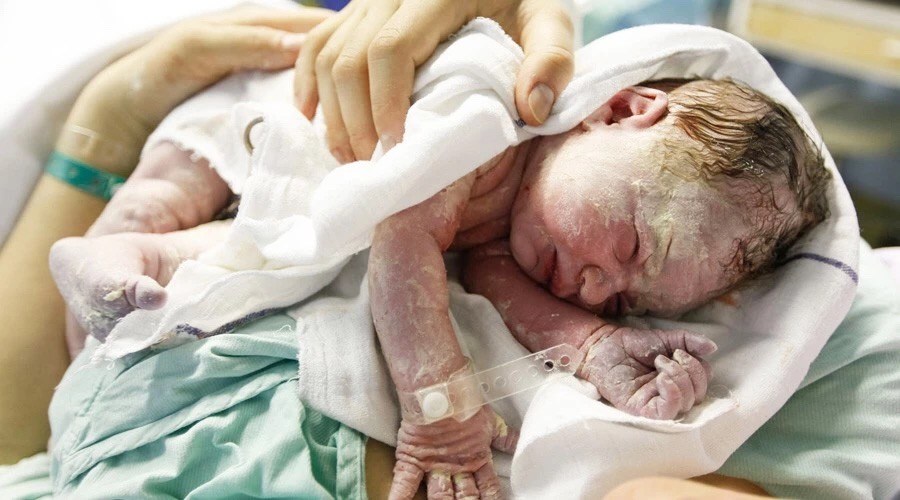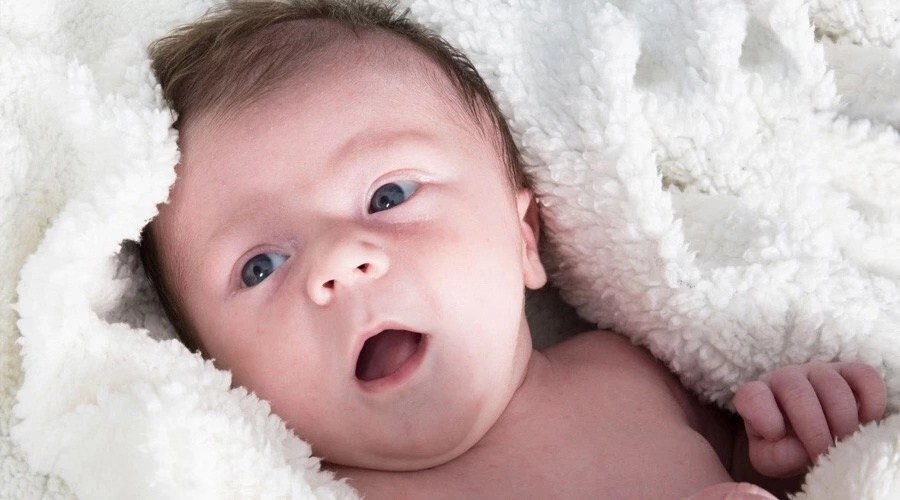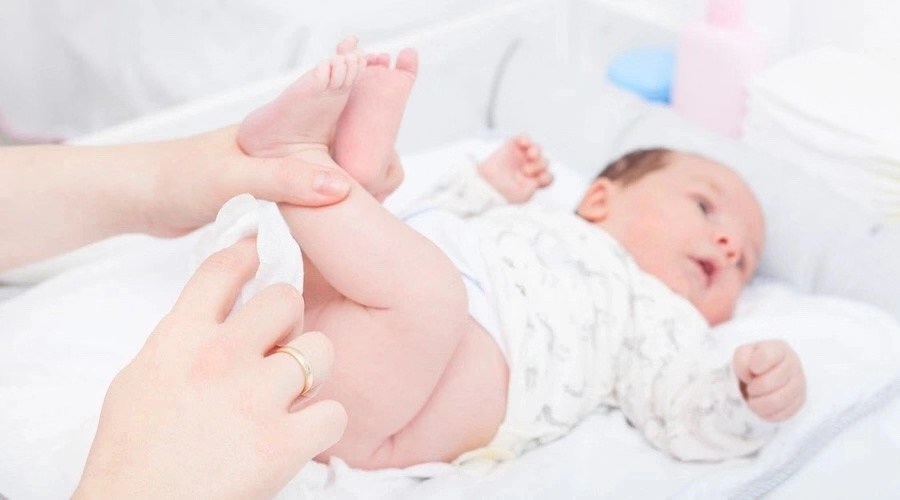
There will be a white layer on the skin surface of the newborn baby.
Some novice mothers feel that they look [dirty] and will erase them for their babies.
This layer of white stuff is called fetal sebum. In fact, it has many benefits. Mothers must not wipe it easily.
Before the baby was born, he curled up in his mother’s stomach and was soaked in amniotic fluid. This layer of fetal sebum can protect the baby from the influence of amniotic fluid infiltration, and can also isolate the irritation of excreta such as amniotic fluid feces to the skin.
When the mother gives birth, this layer of fetal sebum can also play a lubricating role and reduce the friction between the baby and the birth canal. At the same time, it resists the environment rich in bacteria in the birth canal and isolates the baby.
Fetal sebum is not only the [protective film] before the baby is born, but also plays a great role after the baby is born.
I. Heat preservation
When the baby comes out of the mother’s warm belly, when it comes into contact with the external environment, it will find that the external temperature is so low.
The function of the newborn’s thermoregulatory center is not perfect, and the body’s heat is emitted outward, which will reduce the body temperature.
Having this layer of fetal sebum wraps the baby, which is conducive to reducing the heat dissipation of the body and maintaining a constant body temperature.

2. Moisturizing effect
Newborn babies come to this world from their mothers’ stomachs. In addition to temperature changes, the humidity of the environment should also be adjusted accordingly.
Fetal sebum can help the baby’s skin moisturize and make the baby better adapt to the dry environment.
III. Protection
After testing, there are 41 kinds of proteins in fetal sebum, 39% of which have been identified as components of innate immunity and 29% have direct antibacterial properties.
The pH value of fetal sebum is between 6.7 and 7.4, and under fetal sebum, the pH value of skin is between 5.5 and 6.0. Weak acidic environment is considered to inhibit the growth of pathogenic bacteria and maintain the stability of normal flora of skin.
In addition to the thigh root, armpit, neck and other places with more skin folds can be slightly wiped to avoid erosion caused by the decomposition of fetal sebum into fatty acids to stimulate local skin, it is better not to wipe other parts.
Within one week after the baby is born, the fetal sebum will be absorbed by the baby’s skin, and then the baby’s skin will present a delicate and smooth texture.

Four, after the fetal sebum is absorbed, the baby’s skin faces the external stimulation directly.
Although the baby’s skin defense capability is continuously upgrading, the baby’s delicate skin will be more vulnerable to external stimulation after fetal sebum is absorbed by the skin.
Especially for small farts, the pH value in the area under the diaper will increase after contacting urine and poop.
Elevated pH value will activate enzymes in feces, which will directly stimulate and damage the skin and easily produce symptoms of diaper dermatitis.
The increase of pH value will also change the microorganism of the skin, and various pathogenic bacteria and microorganisms in feces will more easily colonize the skin, causing skin infection.

However, mothers need not panic either. As long as they take scientific care, they can still avoid various dermatitis and skin infections to a large extent.
When choosing diapers, mothers should try their best to choose products with good absorption and can help the skin block the alkaline environment where urine and feces are located.
In addition to choosing diapers, correct care is very important. Recommend several daily care tips to mothers:
Step 1 Change diapers frequently
It is recommended to change diapers every 2 ~ 3 hours. If the best diapers are not changed for a long time, the risk of diaper rash will still increase.
2. Clean your fart + [dry] your fart
When replacing, wash the baby’s buttocks with clear water. Do not use alkaline soap or lotion, which will easily damage the acidic barrier on the baby’s skin. It is best to [dry] the buttocks before putting on diapers.
3. Ten minutes a day [naked]
Let babies light their farts for 10 minutes a day, and have such opportunities 1-2 times a day, which can reduce the risk of diaper rash.
Most babies’ diaper rash symptoms can be improved and subsided through appropriate home care.
If the family care is still not completely improved after a week, or if the baby has uncomfortable symptoms and often catches them repeatedly, it is better to turn to a professional dermatologist for help.
